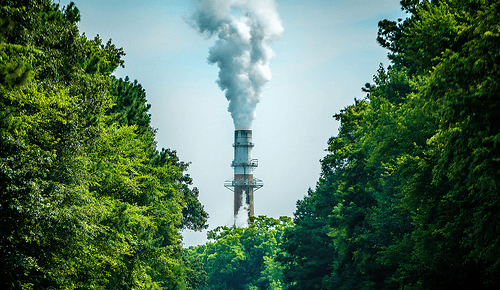The national pledges (INDCs) submitted by countries as part of the Paris Agreement represent a new phase in the collective climate efforts but are inadequate to slow climate change, according to a new analysis released by the Universal Ecological Fund (FEU-US) on Thursday (Sept. 29). Without additional action and advanced technologies the 2°C temperature target, the threshold for the world to avoid the worst effects of climate change, could be reached as soon as 2050.
The study, The Truth About Climate Change, is co-authored by seven top climate scientists. It synthesizes the conclusions from the IPCC and key climate research to analyze the outcome of the December 2015 Paris Climate Conference.
Of the 162 pledges submitted to the UNFCCC (representing 189 countries), 27 were made without any conditions, 44 are conditional upon obtaining funding from donor countries for their implementation, and 91 combine unconditional and conditional pledges.
If those pledges without any conditions are implemented, global GHG emissions are expected to increase by six percent in 2030. If all pledges are 100 percent realized emissions will remain at the current levels in 2030.
“Climate change is happening now and much faster than anticipated,” says Sir Robert Watson, former Chair of the IPCC. “While the Paris Agreement on climate change is an important step in the right direction, what is needed is a doubling or tripling of efforts.”
“With the Paris Agreement, all countries are finally together in the fight against climate change,” says Carlo Carraro, Co-chair of the IPCC Working Group III and Executive Board Member of CMCC Foundation and Director of ICCG. “It sets the basis for all countries to take action, but its weakness is based on voluntary pledges that cannot be legally enforced. Political action will be also required in all countries to approve policies, regulations and incentives for the implementation of the pledges at the national level.”
The report provides answers to critical questions and issues to be addressed in the next phase of climate action at both global and national level, summarizing it in key numbers and facts:
- 195 countries adopted the Paris Agreement on climate change. It represents a critical step towards global climate action since, except for a handful of countries, climate change has not been a priority for taking action for almost 20 years.
- 162 pledges, representing 189 countries, were made to combat and adapt to climate change, to be implemented from 2020 to 2030.
- 83 percent of the pledges are partially or totally conditional to the use of USD 100 billion per year in financial assistance for their implementation.
- If all pledges are implemented, global GHG emissions will be 33 percent above the level of what they should be in 2030 to stay below 2C° above pre-industrial levels.
- Global average temperature has already reached 1°C above pre-industrial times in 2015.
- Because of the lack of action to stop the increase in global GHG emissions in the last 20 years, an additional warming of 0.4-0.5°C is expected. The 1.5°C could be reached by the early 2030s.
- The 2°C target could be reached by 2050, even if pledges are fully implemented.
- Weather-related events due to climate change have doubled in number since 1990. Reaching the 2°C target means an additional doubling in the number of weather events already experienced everywhere.
- To stay below 2°C, CO2 emissions should be net zero by 2060-2075.
- CO2 accounts for 65 percent of global GHG emissions as a result of the burning of fossil fuels.
- About 82 percent of the energy (electricity, fuel and natural gas) in the world is produced by burning fossil fuels (31 percent oil, 29 percent coal and 22 percent natural gas).
- Non-fossil fuel electricity generation is 30 percent (16 percent from hydro-power, 5 percent from renewables and 11 percent from nuclear power).
- The oceans, trees and plants remove about half (50 percent) of man-made CO2 emissions.
- Extensive reforestation and conversion of land into forest will not be enough to cut CO2 emissions to net zero. It could imply expanding the current world’s forest cover, at least, twofold.
- To reduce CO2 emissions to net zero, technologies such as carbon capture and storage will be required. About a dozen CCS plants in operation capture less than 0.1 percent of CO2 emissions.
- The production of energy by burning biomass coupled with CCS will also be required to remove CO2 from the atmosphere. Currently, there are no such plants in the world.
- The demand for energy is estimated to double due to the anticipated 40 percent population increase by 2050. Changing the way energy is produced in the world will be critical. Adaptation measures to reduce the risks and the unavoidable impacts of climate change will be too.
- All countries agreed to revise their pledges by 2018, a sufficient time to significantly raise the ambition of actions to reduce GHG emissions in all countries.




